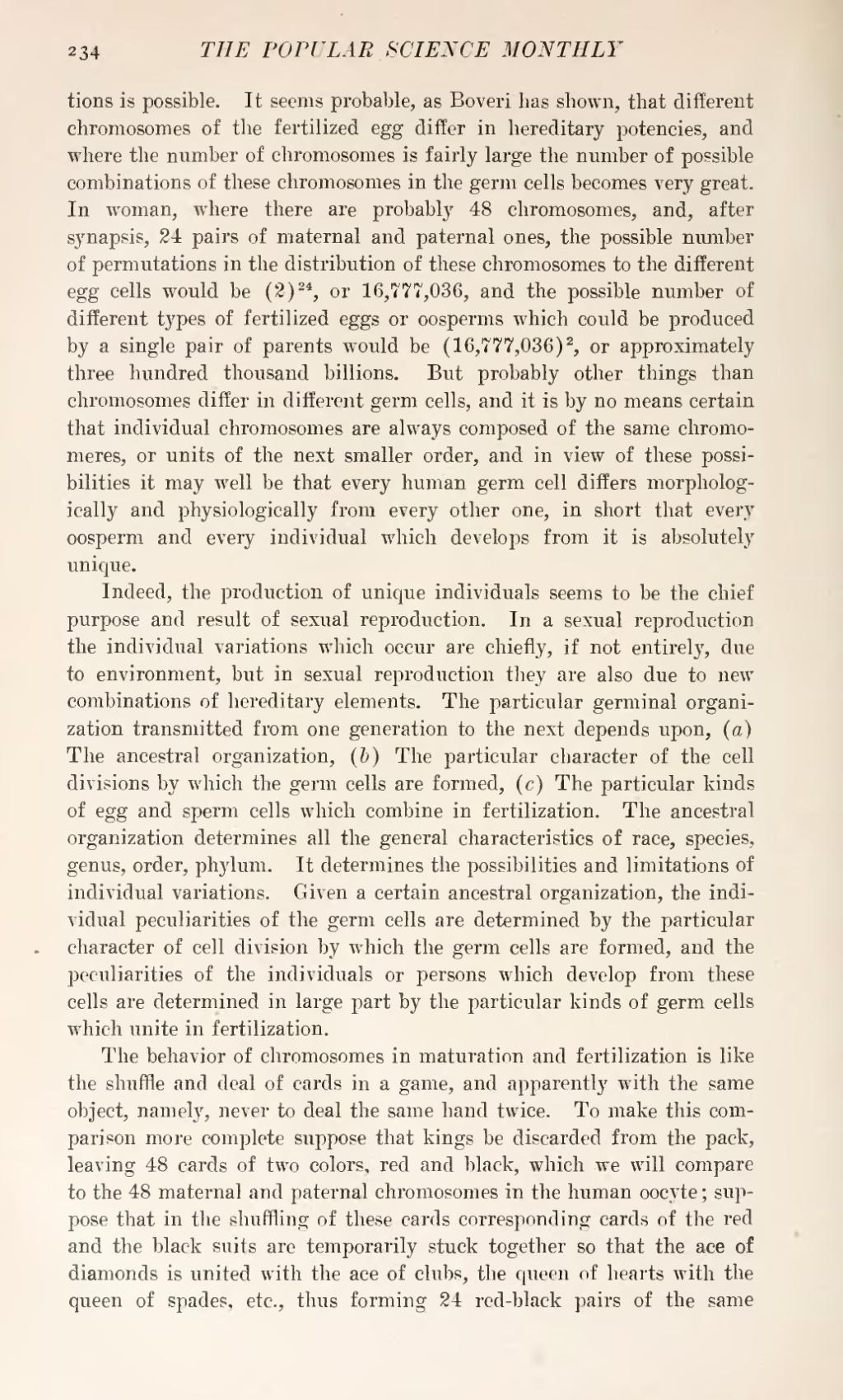tions is possible. It seems probable, as Boveri has shown, that different chromosomes of the fertilized egg differ in hereditary potencies, and where the number of chromosomes is fairly large the number of possible combinations of these chromosomes in the germ cells becomes very great. In woman, where there are probably 48 chromosomes, and, after synapsis, 24 pairs of maternal and paternal ones, the possible number of permutations in the distribution of these chromosomes to the different egg cells would be , or 16,777,036, and the possible number of different types of fertilized eggs or oosperms which could be produced by a single pair of parents would be (16,777,036), or approximately three hundred thousand billions. But probably other things than chromosomes differ in different germ cells, and it is by no means certain that individual chromosomes are always composed of the same chromomeres, or units of the next smaller order, and in view of these possibilities it may well be that every human germ cell differs morphologically and physiologically from every other one, in short that every oosperm and every individual which develops from it is absolutely unique.
Indeed, the production of unique individuals seems to be the chief purpose and result of sexual reproduction. In a sexual reproduction the individual variations which occur are chiefly, if not entirely, due to environment, but in sexual reproduction they are also due to new combinations of hereditary elements. The particular germinal organization transmitted from one generation to the next depends upon, (a) The ancestral organization, (b) The particular character of the cell divisions by which the germ cells are formed, (c) The particular kinds of egg and sperm cells which combine in fertilization. The ancestral organization determines all the general characteristics of race, species, genus, order, phylum. It determines the possibilities and limitations of individual variations. Given a certain ancestral organization, the individual peculiarities of the germ cells are determined by the particular character of cell division by which the germ cells are formed, and the peculiarities of the individuals or persons which develop from these cells are determined in large part by the particular kinds of germ cells which unite in fertilization.
The behavior of chromosomes in maturation and fertilization is like the shuffle and deal of cards in a game, and apparently with the same object, namely, never to deal the same hand twice. To make this comparison more complete suppose that kings be discarded from the pack, leaving 48 cards of two colors, red and black, which we will compare to the 48 maternal and paternal chromosomes in the human oocyte; suppose that in the shuffling of these cards corresponding cards of the red and the black suits are temporarily stuck together so that the ace of diamonds is united with the ace of clubs, the queen of hearts with the queen of spades, etc., thus forming 24 red-black pairs of the same


